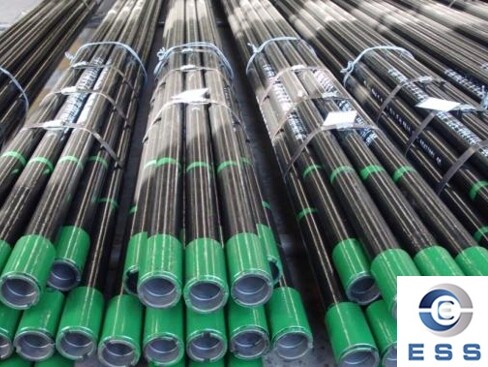
OCTG pipe include drill
pipe, casing
and tubing used on land and offshore, and are used in the oil and gas
production field. What is SSC? SSC is sulfide stress cracking, which can cause
materials to suddenly break without warning, leading to serious safety
accidents and even catastrophic consequences. Especially in high-pressure and
high-strength pipelines, SSC can cause major safety accidents, so special
attention needs to be paid to the anti-SSC performance of OCTG pipes to ensure
the safety of the pipeline.
The main methods for OCTG pipes to resist
SSC include adjusting the chemical composition, heat treatment process and
selecting appropriate materials. By optimizing these aspects, the sulfide
stress corrosion resistance of OCTG pipes can be effectively improved.
Adjust chemical composition
Adjusting the chemical composition is the
key to improving the SSC resistance of OCTG pipes. By controlling the content
of carbon, manganese, phosphorus, sulfur, molybdenum, chromium, vanadium,
titanium, copper and other elements, the SSC resistance of the material can be
significantly improved. For example, the chemical composition of 90ksi steel
grade OCTG pipe includes C 0.18%-0.22%, Mn 0.30%-0.45%, P≤0.015%, S≤0.003%, Mo 0.18%-0.2%, Cr
1.6%-1.8%, V 0.04%-0.06%, Ti 0.07%-0.09%, Cu 0.05%-0.17%, etc. The precise
control of these components can help improve the SSC resistance of OCTG tubes.
Heat treatment process
The heat treatment process also has an
important impact on the SSC resistance of OCTG pipes. Through quenching and
tempering, the structure and properties of the material can be changed. Studies
have shown that the increase in quenching temperature will lead to an increase
in the size of the microstructure at all levels of tempered martensite, a
reduction in the proportion of large-angle grain boundaries, and an increase in
dislocation density, thereby affecting the SSC resistance. Therefore, by
optimizing the quenching and tempering process, the structure and properties of
the material can be effectively controlled and its SSC resistance can be
improved.
Choose the right material
Selecting the appropriate material is also
an important measure to resist SSC. In humid carbon dioxide environments, high
chromium steels such as 9% Cr and 13% Cr martensitic stainless steel are widely
used in the production of OCTG pipes. These materials have good CO2 corrosion
resistance and can effectively resist sulfide stress corrosion. In addition,
reasonable material selection can also select appropriate materials according
to specific application environments and requirements, such as API standard oil
well casing C-75, N-80 and P-110, etc. These materials perform well in
different application scenarios. Anti-SSC performance.
Summary
Through the above methods, the sulfide
stress corrosion resistance of OCTG pipes can be effectively improved to ensure
their safe use in harsh environments.













 Eastern Steel Manufacturing Co.,Ltd not only improve product production and sales services, but also provide additional value-added services. As long as you need, we can complete your specific needs together.
Eastern Steel Manufacturing Co.,Ltd not only improve product production and sales services, but also provide additional value-added services. As long as you need, we can complete your specific needs together.










